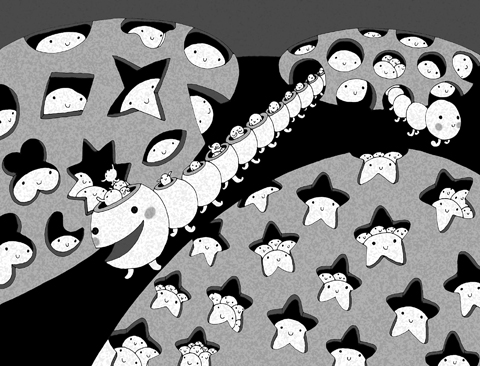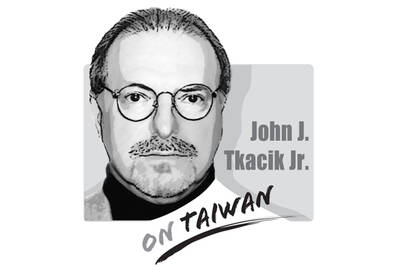While the rest of the world struggles, developing Asia is shifting from recession to recovery.
The latest economic indicators from the world’s advanced economies remain mixed. There are some signs of stabilization — industrial output and consumer spending are, for example, falling much more slowly than they were. But stabilization does not mean imminent recovery. The pace of the deterioration may be slowing, but a decline is still a decline. Unemployment is still on the rise. Consumer and business confidence has not recovered. It is clear that the recession has yet to bottom out in the US and Europe.
By contrast, signs are much more favorable in Asia. Markets, which are typically the first indicators of recovery, are rebounding much more sharply here. While the Dow Jones Industrial Average rose 11 percent in the second quarter, Japan’s Nikkei 225 jumped 23 percent. Equity markets in China rose 25 percent, India 53 percent and Vietnam 60 percent.

Asia’s real economy is also doing much better. Industrial production in South Korea, Singapore and Thailand has been rising in recent months. And while most economies in Asia have suffered their worst performance since the 1997-1998 Asian financial crisis, we believe they have hit bottom.
ADB forecasts that GDP growth for emerging East Asia will still be 3 percent this year. While that’s a significant reduction from the 6.1 percent growth last year, it is growth nonetheless — and much better than other regions of the world.
Will Asia lead the global recovery? Quite possibly. We expect a V-shaped recovery — growth in the region is likely to rise to about 6 percent next year. However, this is still two percentage points below the 8 percent average growth between 2003 and 2007. The reason is while we expect government stimulus to boost domestic demand, we doubt the external demand that drove exports during the years prior to the latest crisis will return any time soon. We now see the US economy contracting 3 percent this year, while the economies in Europe and Japan will likely shrink 4.3 percent and 5.8 percent respectively.
China is leading the recovery in Asia. Aggressive government spending — more than 7 percent of GDP this year, and 8 percent next year — could fuel domestic growth. That, in turn, should help other Asian economies recover as they fill Chinese demand for their goods.
China is the biggest offshore buyer of South Korean products and the second largest for Japan, snapping up about a quarter of South Korean exports and one-sixth of Japan’s. About 12 percent of total exports from the five largest Southeast Asian economies — Indonesia, Malaysia, Philippines, Thailand and Vietnam — go to China.
But that won’t be enough to restore developing Asia to the growth levels seen in recent years. For that to begin to happen, consumers in the world’s major economies also need to start buying Asian goods again. The US, Japan and Europe remain major markets for Asian exporters. Intra-Asian trade has grown rapidly in recent years but remains largely based on parts and components rather than final goods. Asians still do not buy finished products made in their own backyard.
In fact, economic growth in the US, Japan and Europe influences East Asia’s regional output at least as much as China’s does. Beijing’s ability to sustain more than 8 percent economic growth is also reliant on a global recovery to provide external demand for its exports. Economic growth that relies on stimulus is not sustainable. Clearly, China or Asia alone cannot be the region’s sole engine of growth. Developing Asia needs two engines — China and, just as important, the major advanced economies.
The implications are clear. First, a rebalancing of the sources of growth is needed. Even if demand in advanced economies recovers to pre-crisis levels, that will not be enough to meet Asia’s expanding exports. The key for sustaining long-term economic growth in Asia is how to strengthen domestic and regional demand.
Governments can no longer rely on export-oriented development strategies. Strengthening social safety nets, broadening and deepening financial markets, supporting small and medium enterprises (especially in services), and increasing exchange rate flexibility will all help strengthen domestic demand. But effective rebalancing requires both demand-side and supply-side polices. Developing more competitive and efficient domestic industries to serve domestic markets will take time.
Second, to avoid any repeat of the global financial crisis, the region’s policymakers should improve and streamline their regulatory and supervisory regimes, while reinforcing regional and global cooperation. By and large, emerging East Asia’s financial systems and institutions were shielded from the direct impact of the global financial crisis. The resilience of Asia’s banking systems has been attributed to reforms taken following the last Asian financial crisis. Nevertheless, current risk-management and prudential oversight are clearly insufficient. Both banks and regulators must upgrade their systems to prepare for future risks and challenges. The underlying causes of the current global turmoil — emanating from financial innovation and globalization — stress the need to better supervise financial institutions and protect financial stability.
While Asia may already be on the path to recovery, a return to sustained and rapid long-term economic growth will require a rebalancing of the sources of that growth and the safeguarding of financial market stability.
Jong-Wha Lee is the Asian Development Bank’s chief economist.
Jaw Shaw-kong (趙少康), former chairman of Broadcasting Corp of China and leader of the “blue fighters,” recently announced that he had canned his trip to east Africa, and he would stay in Taiwan for the recall vote on Saturday. He added that he hoped “his friends in the blue camp would follow his lead.” His statement is quite interesting for a few reasons. Jaw had been criticized following media reports that he would be traveling in east Africa during the recall vote. While he decided to stay in Taiwan after drawing a lot of flak, his hesitation says it all: If
When Democratic Progressive Party (DPP) caucus whip Ker Chien-ming (柯建銘) first suggested a mass recall of Chinese Nationalist Party (KMT) legislators, the Taipei Times called the idea “not only absurd, but also deeply undemocratic” (“Lai’s speech and legislative chaos,” Jan. 6, page 8). In a subsequent editorial (“Recall chaos plays into KMT hands,” Jan. 9, page 8), the paper wrote that his suggestion was not a solution, and that if it failed, it would exacerbate the enmity between the parties and lead to a cascade of revenge recalls. The danger came from having the DPP orchestrate a mass recall. As it transpired,

Elbridge Colby, America’s Under Secretary of Defense for Policy, is the most influential voice on defense strategy in the Second Trump Administration. For insight into his thinking, one could do no better than read his thoughts on the defense of Taiwan which he gathered in a book he wrote in 2021. The Strategy of Denial, is his contemplation of China’s rising hegemony in Asia and on how to deter China from invading Taiwan. Allowing China to absorb Taiwan, he wrote, would open the entire Indo-Pacific region to Chinese preeminence and result in a power transition that would place America’s prosperity
All 24 Chinese Nationalist Party (KMT) lawmakers and suspended Hsinchu Mayor Ann Kao (高虹安), formerly of the Taiwan People’s Party (TPP), survived recall elections against them on Saturday, in a massive loss to the unprecedented mass recall movement, as well as to the ruling Democratic Progressive Party (DPP) that backed it. The outcome has surprised many, as most analysts expected that at least a few legislators would be ousted. Over the past few months, dedicated and passionate civic groups gathered more than 1 million signatures to recall KMT lawmakers, an extraordinary achievement that many believed would be enough to remove at